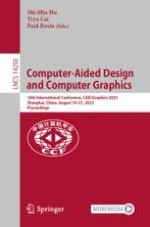This book constitutes the proceedings of the CCF 18th International Conference on Computer-Aided Design and Computer Graphics, CAD/Graphics 2023, which took place in Shanghai, China, during August 19–21, 2023.
The 23 full papers included in this book were carefully reviewed and selected from 169 submissions. They focus on topics such as computer graphics and CAD, 3D Printing and Computational Fabrication, 3D Vision, Bio-CAD and Nano-CAD, Computer Animation, Deep Learning for Graphics, Geometric Modeling, Geometry Processing, Rendering, Virtual Reality, Augmented Reality, Visualization, and more.
